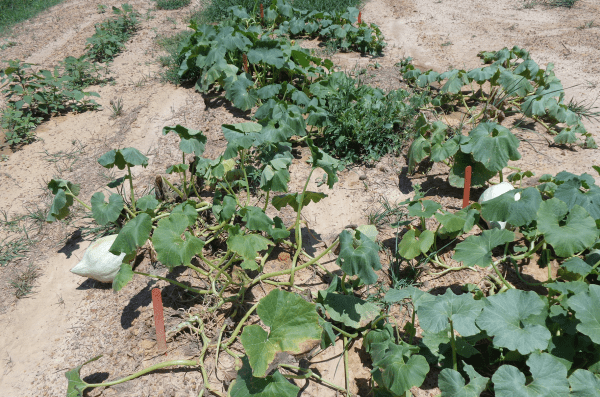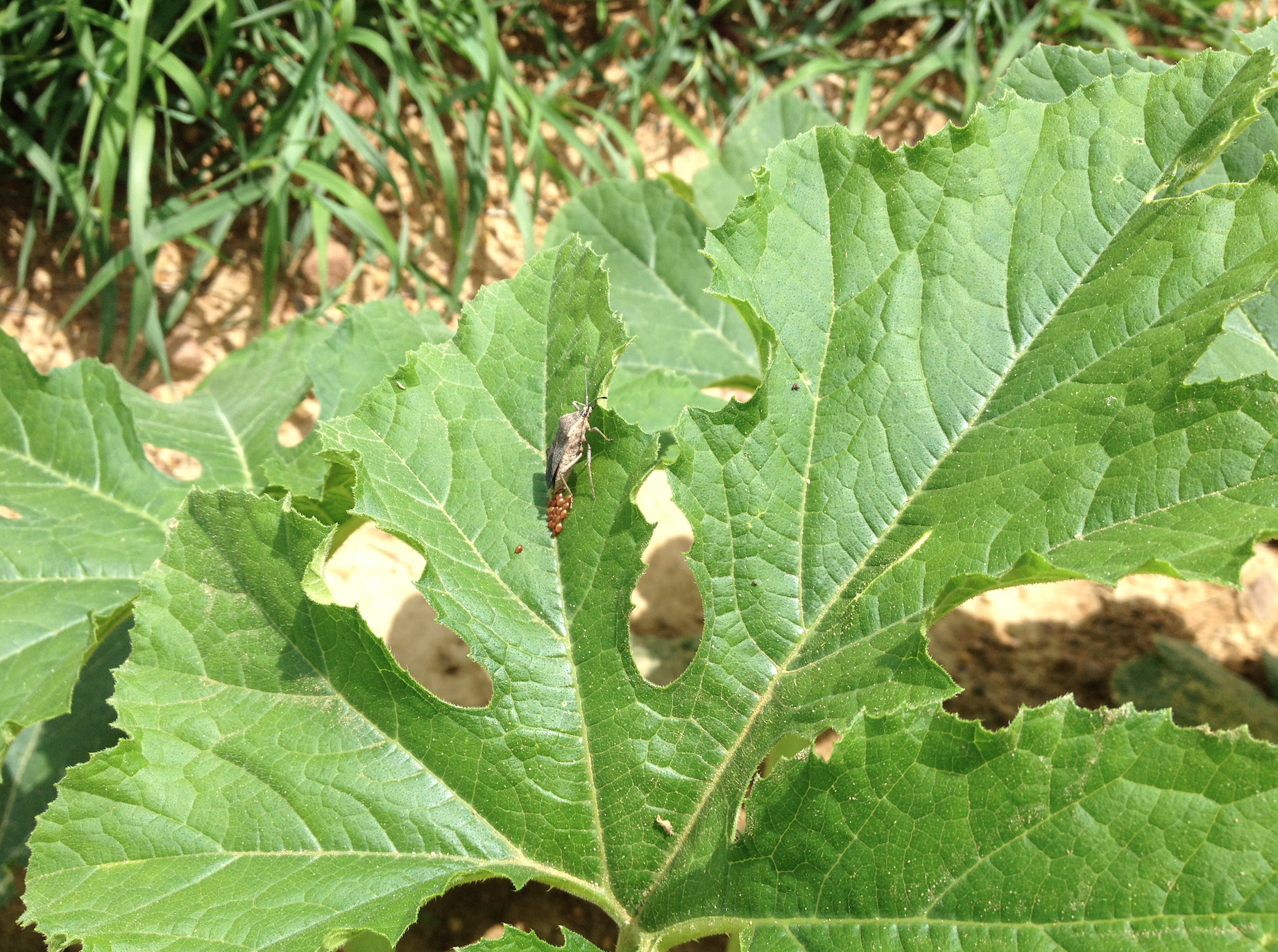Crop Production

Squash and many other cucurbits are a favorite for vegetable farmers that bring a good price at direct markets. However, many insect pests feed on squash which makes growing them in the Deep South a difficult and frustrating and difficult experience for many.
Insect Species
Almost half a dozen major insect species come to mind related to squash. These are generally broken down into two groups: chewing insects and sucking insects. Chewing insect pests include the cucumber beetles, squash vine borers, and pickleworms. Sucking insect pests include aphids, squash bugs, and whiteflies.
It is interesting that the most common insects seen on squash in Alabama include the cucumber beetles, squash bugs, and squash vine borers in that order. Aphids and whiteflies occasionally become major pests in South Alabama. The order of insect pests experienced on squash may depend on the location.

It is also important to remember that insect pests cause more than direct feeding damage on squash . The damage can also be indirect through disease transmission. This is the case with squash bugs, whiteflies, and aphids – all sucking insect pests. However, during cool wet summers, researchers lose more crops to the bacterial and viral diseases than the actual aphid and squash bug pressure in Alabama research plots.
Vegetable producers should not immediately panic when an insect is on squash plants. Instead, think about the health of the plants and the ecosystem. Often times the cause of pest problems is an incorrect planting decision, but can also include other plant stressors. Remember that prevention of pests is the number one goal of organic integrated pest management (IPM) systems, since rapid control after pest establishment becomes more difficult later in the production season.
A range of cultural control tactics include:
- selecting virus-resistant varieties
- timely planting and harvest
- crop rotation
- timely removal of crop debris after harvest (squash vine borer reduction)
- maintaining a fertilization schedule
- consistent irrigation
Integrated Pest Management
These are basic preventive approaches to integrated pest management (IPM), which is also called Level 1 IPM. Perimeter trap cropping with Baby Blue and New England Hubbard Squash in a mixed system is effective in reducing cucumber beetle and squash bug damage to yellow squash as the main crop.
Permanent Pest Exclusion Fabric
As Level 2 IPM implementers, producers are encouraged to investigate the use of temporary or permanent pest exclusion fabric. Two light-weight materials tested in Alabama include the Super-Lite Insect Barrier (Gardens Alive, Inc.) and AgroFabric Pro 19 (Seven Springs Farm, Inc). Both of these materials look like lighter versions of the common row cover used for frost protection, but up close these materials are much lighter with 85-95 percent light and rain penetration. The trick is to put these light fabric on low-hoops with inverted loops almost immediately after transplanting or after the seeds have germinated. These materials deflect many of the aphids and squash vine borers that fly early in the season.
Squash plants can be grown inside the low hoops for several weeks when they are only growing vegetatively and do not need pollinators. However, producers should not lay the fabric straight on the leaves. Squash vine borers fly early in spring and appear to resemble wasps. These pests can be very effectively reduced as females won’t be able to access the plants. Another advantage of the previously mentioned light weight fabrics is the ability to dampen extreme temperature changes early in the season. The material also allows more consistent seedling growth. Producers can also release beneficial insects under the cover, on low hoops. This will eliminate any accidental pest infestations such as aphids.
For high tunnel producers, use of 50 percent shade cloth as a permanent pest exclusion system around the side and end walls also significantly reduces squash vine borer and squash bug infestation. Of course, watch for any accidental aphid infestation under the light weight fabric as it may exclude beneficial insects, such as lady beetles and lacewings. Exclusion of beneficial insects can lead to rapid aphid growth. In other words, careful planning is needed to prevent environmental backlash.
Insecticide Options
Growers today have a wide range of organic insecticides to choose from. Visit the OMRI database for certified organic products. It is critical to scout crops for timely pest detection and identification, apply correct insecticide dosage, and utilize application methods. Application methods include spray equipment that provides good coverage.
For example, squash bug adults are difficult to control with natural pyrethrin and Spinosad based insecticides, but the flightless nymphs are better targets for organic spray applications. Trap crops can help concentrate the squash bugs and a few timely applications of named insecticides can cause a significant reduction in nymphs. Internal pests, like squash vine borer and pickleworm larvae, are difficult to manage with topical spray applications. Some producers apply Bt-based insecticides as preventive applications but the timing could be off or weather conditions may reduce product effectiveness.
Always spray in the evening hours when bees are inactive. Sprays later in the day also allow the solution time to dry out overnight. Stop spray applications of organic materials when pest numbers are below the economic threshold. This enables producers to save on the cost of insecticides and protect natural enemies.
Get in touch with Extension professionals and entomologists to develop an IPM strategy suitable for a specific farm. Readers in Alabama can download the Farming Basics Mobile App for connecting with university research and regional Extension agents. Subscribe to the Alabama IPM Communicator e-newsletter for more information about crop production and IPM findings throughout the season.
This research and educational program is funded by grants from the Alabama Department of Agriculture and Industries Specialty Crops Block Grant, USDA SARE, OREI, and Beginning Farmer Programs.

